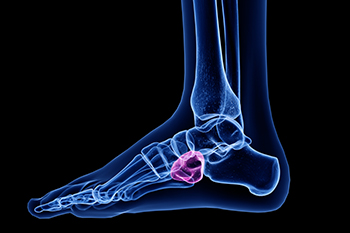
The cuboid bone, a vital component of your foot's structure, often remains unnoticed until a problem arises. The cuboid bone is located on the outer side of the foot, just in front of the heel. It plays a significant role in mobility, aiding in pointing the foot downward and supporting lateral movement. An injury of this bone can lead to cuboid syndrome, which is a partial dislocation at the joint between the heel and the cuboid. Symptoms may include metatarsal pain, lateral ankle instability, hammertoes, or plantar fasciitis. If left untreated, these symptoms can escalate into more severe conditions, such as ankle arthritis or stress fractures. Treatment options involve padding and a manipulation technique to realign the bone. For cuboid fractures, patients may need to refrain from weight-bearing activities for a period of time, followed by a transition to a walking boot. Where conservative methods fail, surgical intervention may be used to stabilize the bone and restore its function, ensuring a quicker recovery. If you are experiencing symptoms of a lateral foot injury, it may involve the cuboid bone. It is suggested that you schedule an appointment with a podiatrist for a thorough exam and indicated treatment options.
Cuboid syndrome, also known as cuboid subluxation, occurs when the joints and ligaments near the cuboid bone in the foot become torn. If you have cuboid syndrome, consult with the podiatrists from Issaquah Foot & Ankle Specialists. Our doctors will assess your condition and provide you with quality foot and ankle treatment.
Cuboid syndrome is a common cause of lateral foot pain, which is pain on the outside of the foot. The condition may happen suddenly due to an ankle sprain, or it may develop slowly overtime from repetitive tension through the bone and surrounding structures.
Causes
The most common causes of cuboid syndrome include:
- Injury – The most common cause of this ailment is an ankle sprain.
- Repetitive Strain – Tension placed through the peroneus longus muscle from repetitive activities such as jumping and running may cause excessive traction on the bone causing it to sublux.
- Altered Foot Biomechanics – Most people suffering from cuboid subluxation have flat feet.
Symptoms
A common symptom of cuboid syndrome is pain along the outside of the foot which can be felt in the ankle and toes. This pain may create walking difficulties and may cause those with the condition to walk with a limp.
Diagnosis
Diagnosis of cuboid syndrome is often difficult, and it is often misdiagnosed. X-rays, MRIs and CT scans often fail to properly show the cuboid subluxation. Although there isn’t a specific test used to diagnose cuboid syndrome, your podiatrist will usually check if pain is felt while pressing firmly on the cuboid bone of your foot.
Treatment
Just as the range of causes varies widely, so do treatments. Some more common treatments are ice therapy, rest, exercise, taping, and orthotics.
If you have any questions, please feel free to contact one of our offices located in Issaquah, WA . We offer the newest diagnostic and treatment technologies for all your foot care needs.



